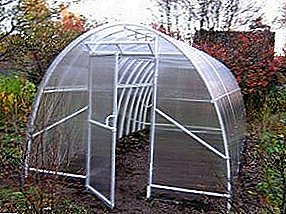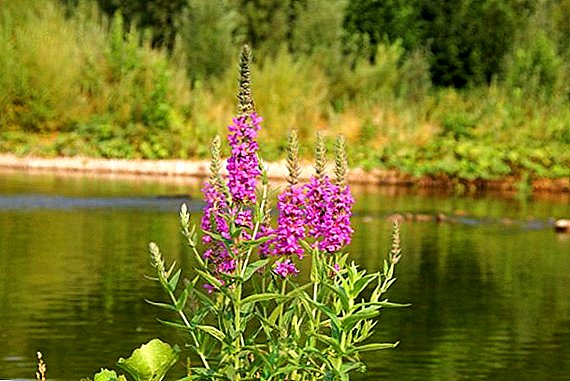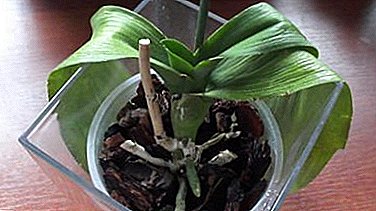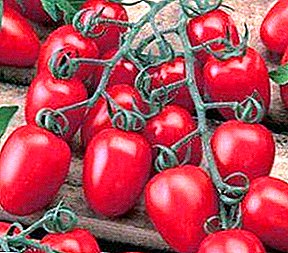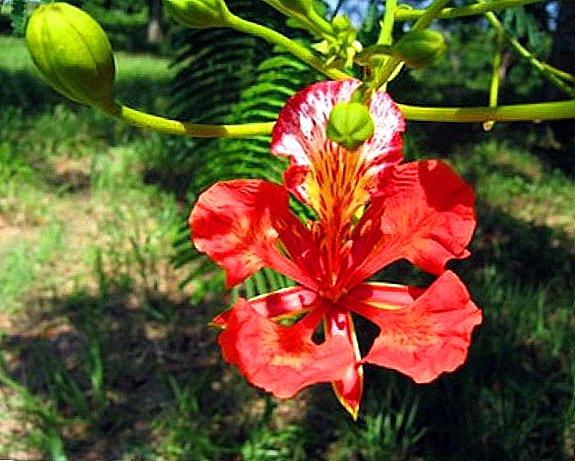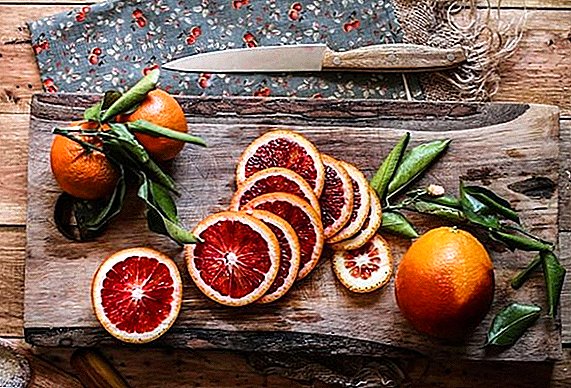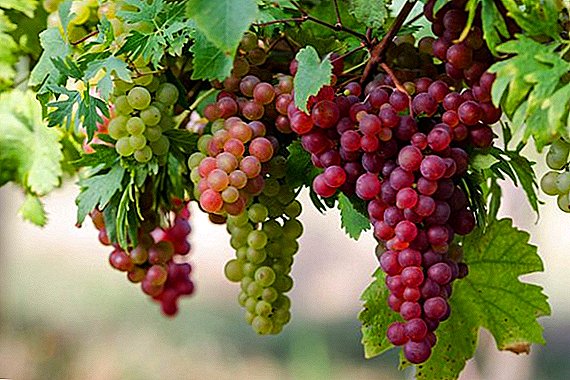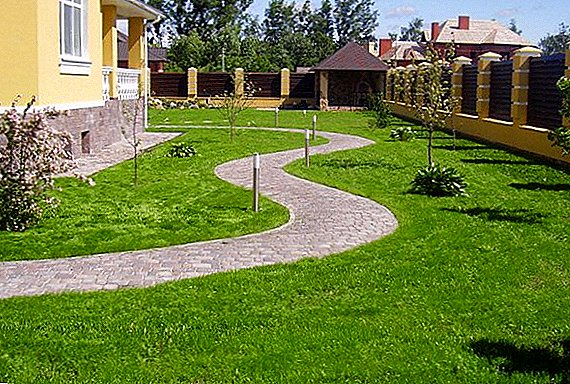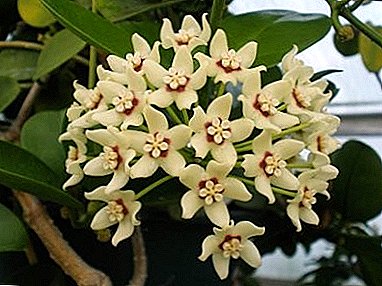
In 1770, the British bark "Endeavor" under the command of Captain James Cook for the first time in history approached the shores of Australia and became in the waters of the bay, which would later be called Botanical. On its shores, naturalists Karl Solender and Joseph Banks found a new type of wax ivy, hoya, and named it Hoya australis — southern hoya.
Plant description
Today, there are many forms of Hoya australis, among them there are cultural hybrids. One of the most spectacular Hoya australis Lisa (Hoya Australist Lisa).
Root system
The root system is branched, permeates the whole earthen room. Healthy roots are hard and plump.
Stem
This creeper has rather long curly shoots, and it needs a support on which it could crawl. Stem thickness about 0.4 cm.
Leaves
The leaves of the southern Khoi Lisa grow densely and very beautiful - they are oval, dense, shiny, rather large with noticeable veins. In the middle a mature leaf is yellow with spots of lettuce color, and at the edges is green. Young leaves and shoots are often crimson.
Flowers

Star flowers are collected in large fragrant inflorescences. The crown of flowers is white and pale pink, and the middle is reddish. Flowers live a little less than a week.
Home care
Hoya South is very easy to maintain. It can be grown in a pot, and in hanging pots.
Transplant (after purchase)
For hoi australis, the soil needs a special one, and it is better to transplant the plant from the store. Take a small pot, the roots of the space is not required, besides in a spacious pot ivy is often poured.
But the new one also needs to be properly cleaned with a chlorine-free product, and the soil should be sterilized, so that the homa will not be tormented by nematodes.
Young plants are usually transplanted once a year in April, and adults - once every two, or even three years. Spreading vines prosper in years of close (17-20 cm in diameter) pots, and bloom better in them. Long shoots during transplantation need to be shortened, and not to touch short ones - flowers will appear on them.
Priming
What hoya grows in is difficult to call land - it is a loose permeable substrate, as for orchids. It can be bought for hoya, and you can cook it at home. Take one part of the leafy land, peat and perlite (volcanic rock, crushed and thermally treated). If perlite is not, you can replace it with sand. There should be a hole in the bottom of the pot.
Watering

Hoya australis loves constant humidity, but not swamp dampness. Not a single hoy likes to grow with wet roots. Abundant watering and liquid mud, in which roots stick, is not the same thing. The soil should be moderately wet. without stagnant moisture. You need to water this flower with soft water when the soil dries out from above 2-3 centimeters. In the summer, if there is no heat - once a week (in the heat - more often), in winter - once every 10 days.
Air humidity
In hot weather, the South Hoya will be glad to have a warm “rain”. If the plant blooms, do not irrigate the flowers - it is harmful to them. If dry and hot weather is long, put the pot with hoey on the "pillow" of wet clay.
Lighting
Hoya australis Lisa will grow well in partial shade, but bright ambient lighting is good for her, so that the midday rays will not burn the leaves.
A window to the southeast or southwest is what you need.
A rest period in indoor hoy cultivation is usually not needed. She prefers a 14-16 hour light day, and in winter she needs lights. Without it, hoya will not grow. If you decide to do without illumination in the winter, reduce watering and do not apply additional feeding - let the flower rest.
Thermal mode
Hoya Australia prefers average temperatures in summer + 17-24 ° С, in winter + 15 ° С. But drafts of wax ivy tolerate poorly and can lose due to them their elegant leaves.
Fertilizer
There is no unanimous opinion regarding dressings for hoi australis among flower growers, except perhaps for one thing: it’s better to give less than to give too much, because ridding the flower of "overfeeding" is much more difficult.
In the period of active growth, you can feed hoya (once in 3 weeks) liquid nitrogen fertilizer, and dilute it must be twice thinner than specified in the instructions. Excellent results in the flowering days give fertilizer for flowering succulents. In the cold season, when ivy slows growth, it is better to refuse feedings.
Breeding
Cuttings
Cuttings for rooting is better to take in spring and autumn. An escape is needed, where there are one or two pairs of leaves, and longer ones.

In the water rooting hoyu australis easiest. It’s good to add root and an activated carbon tablet to prevent rotting.
You need to change the water once a week. If the cutting is small, you can not cover it, but if the leaves are flat, put the bag on top.
Vermiculite rooting cuttings are also convenient.because This mineral maintains constant moisture. It is necessary to moisten the soil after drying, but so that the water does not stagnate.
Put vermiculite in a transparent cup - when the stalk gives the roots, you will see it. Cover the escape with a film so that it is warm and humid. The best temperature is + 20-22 ° C.
In a light substrate, hoya can also be rooted. To prepare it is simple: take in equal parts sand and sliced moss-sphagnum or peat. You can mix the sand and with the finished substrate from the store. Pour the mixture into a glass, moisten it, place a cutting there and cover it. When the mixture dries, moisten it again.
Hoi roots will have to wait 3-4 weeks. When they appear, the plant is time to pot.
Stem slice
This method is used less frequently. although it is easier and faster. On the young shoots of the plant, make an incision, cover it with wet moss and tightly wrap with cling film. Leave it in this form for 2 weeks, during this time moisten the moss 1-2 times when it dries. In a couple of weeks the sprout will give roots. Cut it off, free the roots from the moss that has grown - leave. In one pot can be planted on 3 layering - Bush will be more magnificent. This breeding option allows the plant to bloom in the first year.
Bloom
Hoya australis blooms when the plant comes into effect. Sometimes flowers have to wait for several years, but then it will bloom regularly. Flowering period from June to October. The first wave of flowering is usually in June, and the second - in the beginning of autumn.
After the fragrant stars of wax flowers wither, do not cut flower stalks, new buds will appear on them next year.
Smell
Hoya Australis large inflorescences smell strong and pleasant. Different types of fragrance differ - some fragrant thin and delicate, others bright and spicy. And Hoya Lisa, for example, emits a light fresh scent that resembles the smell of tulips.
Pruning

Hoya does not like pruning, but dead or sick leaves need to be removed. Too long shoots are also worth trimming.
If there were no flowers on them before, they will not appear.
Growth rate
Species of southern Khoi grow unequally, variegated forms - slower monotonous.
But hoya australis Lisa is growing fairly quickly and steadily - this is one of its advantages.
Life expectancy
A perennial plant, with proper care, can live and bloom more than ten years.
Diseases and pests
Southern Hoya rarely gets sick in nature, but in indoor growing a plant can weaken improper care, and then it will be attacked by pests.
- Spider mites, aphids, scale insects - they pull the juice out of the flower, inhibit its growth, spoil the leaves.
- Mealybugs - these "shaggy lice" are very annoying to the plant and also leave a sticky coating on which the fungal infection is infused.
- Root rot - the fungus multiplies and devours the roots, if they live in constant dampness.
What to do: if your hoya leaves are dense, “wax”, you can wipe them with a swab soaked in alcohol - the parasites will immediately die. Another way: treat ivy with Aktellik or another similar drug.
What to do: add insecticide to water for irrigation. The poison through the roots disperses in all parts of the flower, no matter what the parasites gnaw, they will be poisoned. Suitable: Karbofos, Intravir, Aktellik, Tsvetofos.
What to do: remove the hoya from the pot and inspect the roots. If they are softened and darkened - the flower can not be saved, except to cut the cuttings and grow again.
If you managed to capture the disease at the beginning - there is a chance. Remove the flower from the pot, dry it for a couple of days, shake the roots off the ground. Cut off all that affected rot - leaves, stalks, roots. Put hoyu back in the pot and pour a pale pink solution of potassium permanganate or carbendazim (there is a fungicide in stores).
It is not difficult to save southern hoya from diseases, parasites and to grow a spreading luxuriant-flowering vine - you just need to follow simple rules of caring for it.
A photo
Next you will see the photo of Hoya Austrist:






